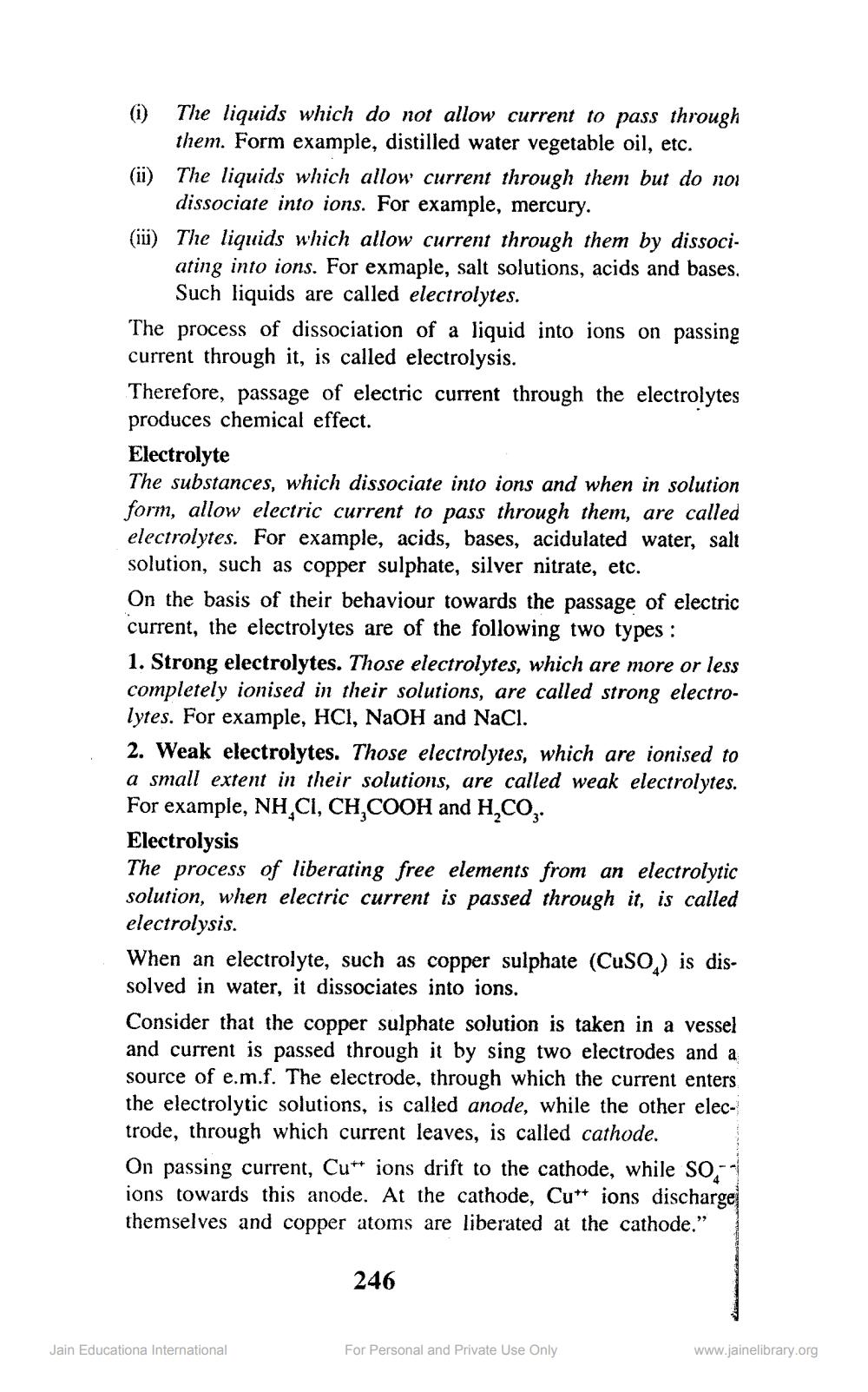________________
(1) The liquids which do not allow current to pass through
them. Form example, distilled water vegetable oil, etc. (ii) The liquids which allow current through them but do not
dissociate into ions. For example, mercury. (ii) The liquids which allow current through them by dissoci
ating into ions. For exmaple, salt solutions, acids and bases,
Such liquids are called electrolytes. The process of dissociation of a liquid into ions on passing current through it, is called electrolysis. Therefore, passage of electric current through the electrolytes produces chemical effect. Electrolyte The substances, which dissociate into ions and when in solution form, allow electric current to pass through them, are called electrolytes. For example, acids, bases, acidulated water, salt solution, such as copper sulphate, silver nitrate, etc. On the basis of their behaviour towards the passage of electric current, the electrolytes are of the following two types : 1. Strong electrolytes. Those electrolytes, which are more or less completely ionised in their solutions, are called strong electrolytes. For example, HCl, NaOH and NaCl. 2. Weak electrolytes. Those electrolytes, which are ionised to a small extent in their solutions, are called weak electrolytes. For example, NH,CI, CH,COOH and H,CO,. Electrolysis The process of liberating free elements from an electrolytic solution, when electric current is passed through it, is called electrolysis. When an electrolyte, such as copper sulphate (Cuso.) is dissolved in water, it dissociates into ions. Consider that the copper sulphate solution is taken in a vessel and current is passed through it by sing two electrodes and a source of e.m.f. The electrode, through which the current enters, the electrolytic solutions, is called anode, while the other electrode, through which current leaves, is called cathode. On passing current, Cu** ions drift to the cathode, while 50,ions towards this anode. At the cathode, Cu*+ ions discharge themselves and copper atoms are liberated at the cathode."
246
Jain Educationa International
For Personal and Private Use Only
www.jainelibrary.org




